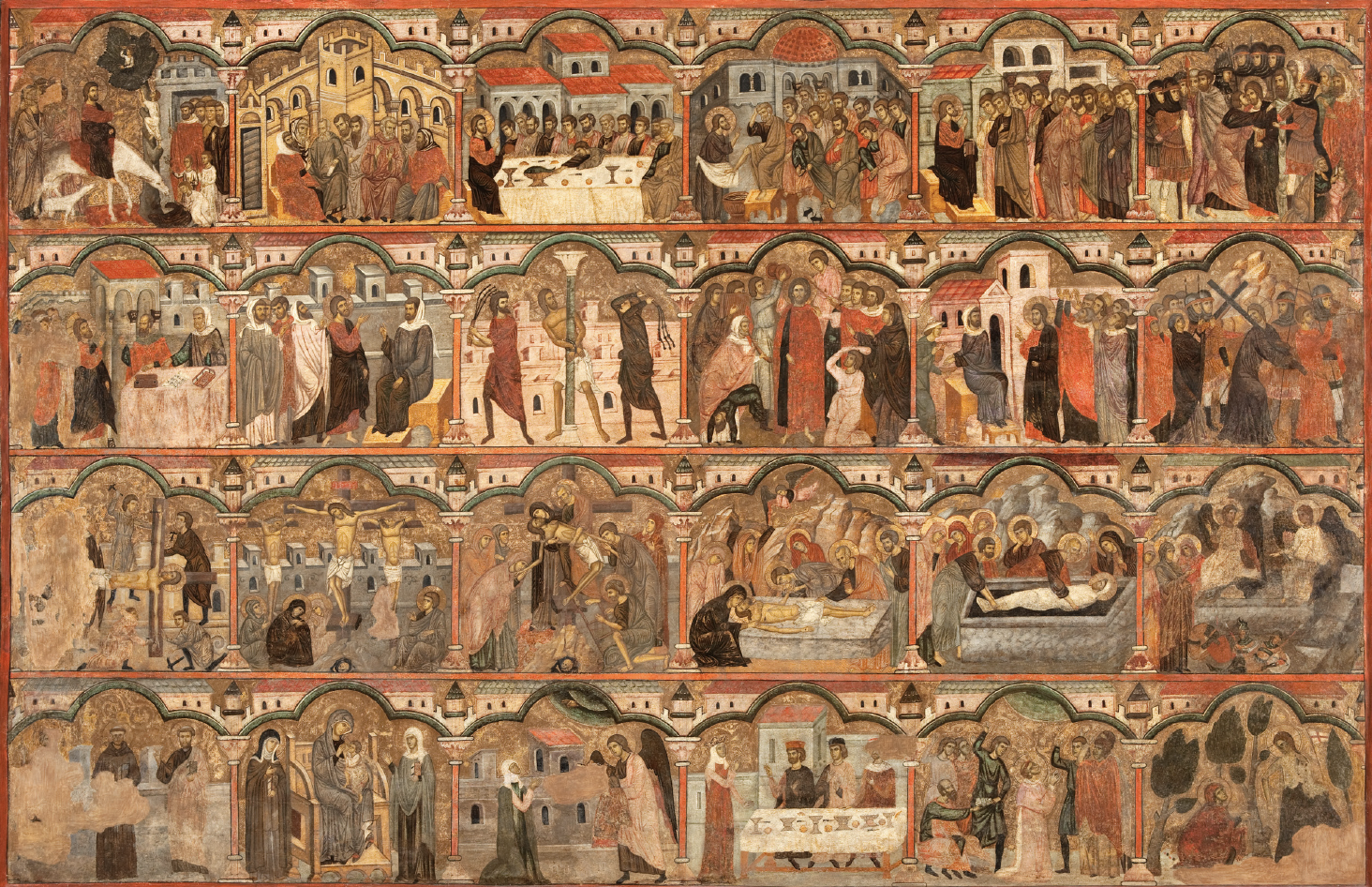Pubblicato
2023-11-21
Parole chiave
- Passion of Christ,
- Mocking of Christ,
- Saint Elizabeth of Hungary,
- Byzantine art,
- ourteenth century panel painting
Abstract
The subject of this essay is the Passion Panel, a large painted panel from the early 14th century originally destined for the convent of Poor Clares of Palma de Mallorca. Historiography has always emphasised its Byzantinism and has often established its figurative origin in Central Italian art. Through an examination of the iconography of the Mocking of Christ present in one of its twenty-four scenes (in which a dancer with long sleeves, an ‘acrobat’ and musicians who mock him have a special significance) is highlighted the rarity of this codification in relation to Western pictorial productions. Instead, its attested presence in Macedonian wall painted cycles would make it possible to trace a hypothesis through which the author of the altarpiece could be classified as a Byzantine painter. Moreover, the identification of the third scene of the predella as the episode of the miracle of the dress of Saint Elizabeth of Hungary, beyond highlighting this apparent iconographic unicum, makes possible to give more solidity to the hypotheses that see this work as the result of an Angevin commission



